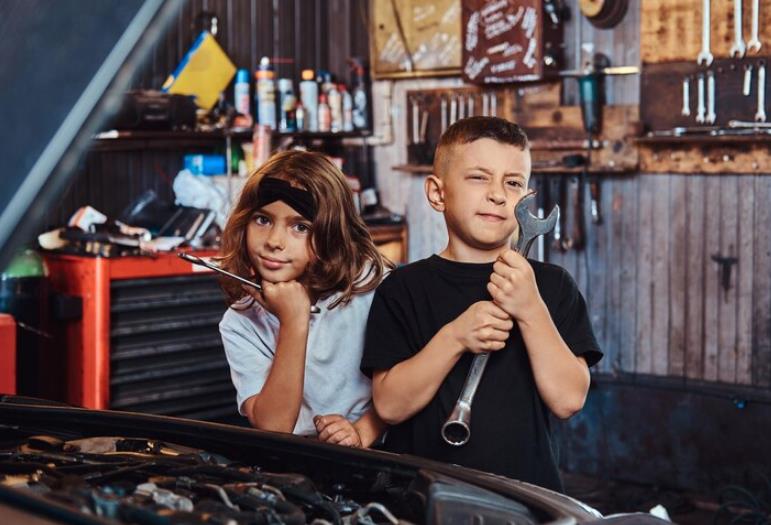You take pride in your car and want to keep it running smoothly. One way to achieve this is by performing DIY auto repairs to ensure your vehicle is in top condition. From changing the oil to replacing brake pads, there are various maintenance tasks you can easily tackle on your own to keep your car in excellent shape. In this blog post, we will guide you through vital DIY auto repairs that will help you maintain your car’s performance and longevity. So, let’s get started on keeping your car in top condition!
Key Takeaways:
- Regular Maintenance is Key: Performing basic auto repairs such as changing oil, replacing air filters, brake pads, checking and replacing belts, and fuses can help keep your car in top condition.
- Proper Tools and Parts: Make sure to have the necessary tools and parts on hand before starting any DIY auto repairs to ensure a smooth and successful process.
- Safety First: Prioritize safety when working on your vehicle by using the correct procedures, tools, and protective gear to avoid accidents or injuries.
Basic Maintenance Tasks
Changing Oil
With regular oil changes, you can keep your engine running smoothly and efficiently. To change the oil in your car, you will need an oil filter and suitable oil for your vehicle. Using a socket wrench and oil drain pan, you can easily remove the old oil, install the new filter, add fresh oil, and replace the oil cap.
Replacing Air Filters
With clean air filters, you can ensure your engine and passenger areas remain clean. To replace the air filter, locate it in your engine bay, then use a screwdriver or pliers to remove the old one and secure the new filter in place with screws.
Replacing air filters should be done every 12,000 to 15,000 miles to maintain optimal engine performance and fuel efficiency. A clogged air filter can reduce airflow, affecting engine performance and fuel efficiency, leading to increased fuel consumption and potential damage to the engine over time.
Replacing Brake Pads
Changing your brake pads is crucial for your car’s safety. Locate the caliper, loosen the bolts, remove the old pads, and install new ones to ensure your braking system functions effectively.
Taking care of your brake pads can prevent costly repairs down the line and ensure your safety on the road. Brake pads should typically be replaced every 25,000 to 70,000 miles, depending on driving habits and road conditions.
Checking and Replacing Belts
On a regular basis, inspect your car’s belts for wear or damage. If you notice any issues, loosen the tensioner bolts, replace the worn or frayed belts, and ensure your engine runs smoothly.
Replacing worn or damaged belts helps prevent engine malfunctions and breakdowns. Belts should be checked every 60,000 to 100,000 miles, depending on the manufacturer’s recommendations, to maintain optimal engine performance and reliability.
Replacing Fuses
Filters should be properly maintained to prevent electrical issues in your car. Locate the fuse box, identify the blown fuse, remove the old one, and install a new fuse to restore power to the affected system.
Regularly checking and replacing fuses can prevent electrical failures in your car. Make sure to use the correct type of fuse to avoid damaging your vehicle’s electrical system. Fuses should be inspected whenever an electrical issue arises to ensure safe and efficient operation of your vehicle.
Advanced Maintenance Tasks
All advanced maintenance tasks are important for keeping your car in top condition. Below are some tasks that you can perform to ensure your vehicle runs smoothly and efficiently:
Engine Tune-Up
To maintain the performance of your engine, it is important to conduct regular tune-ups. This includes checking and replacing spark plugs, ignition wires, and filters to ensure optimal fuel combustion and efficiency.
Transmission Fluid Change
Advanced task of changing transmission fluid can help prolong the life of your transmission. Plus, it can prevent costly repairs down the line by ensuring that your transmission operates smoothly and efficiently.
Cooling System Maintenance
Fluid is important for your car’s cooling system to function properly. A regular check and flush of the coolant can help prevent engine overheating and potential damage. A regular check and maintenance of the cooling system is imperative for preventing your engine from overheating and ensuring optimal performance. By flushing out old coolant and replacing it with fresh coolant, you can prevent corrosion and keep your engine running cool. Remember to follow your vehicle manufacturer’s guidelines for recommended coolant type and frequency of coolant flushes.
To wrap up
Following this guide on DIY auto repairs will help you keep your car in top condition. Regular maintenance tasks such as changing oil, replacing air filters, brake pads, checking and replacing belts, and fuses are crucial for the longevity and performance of your vehicle. By staying on top of these tasks, you can save money on costly repairs and ensure a smooth and safe driving experience. Remember to always use the correct tools and parts for your specific vehicle make and model.
FAQ
Q: Why is it important to change the oil in my car regularly?
A: Changing the oil in your car regularly is important to keep your engine running smoothly and efficiently. Old oil can cause damage to your engine and reduce its performance.
Q: How often should I replace the air filter in my car?
A: The air filter in your car should be replaced every 12,000 to 15,000 miles, or as recommended by your vehicle’s manufacturer. A clean air filter helps to keep your engine and passenger areas clean.
Q: When should I replace the brake pads in my car?
A: Brake pads should be replaced when they are worn down to 1/8 inch or less. You may also need to replace them if you hear squeaking or grinding noises when braking. Always use the correct type of brake pads for your vehicle.

